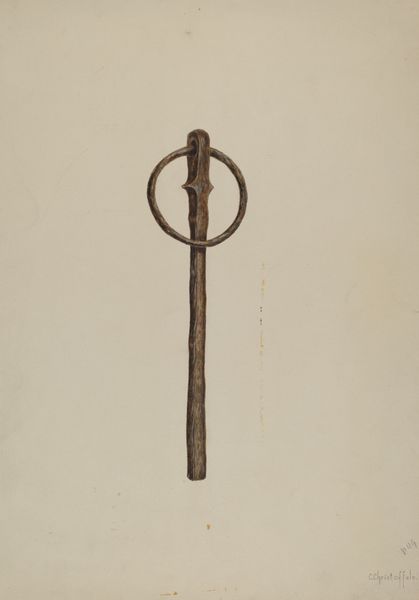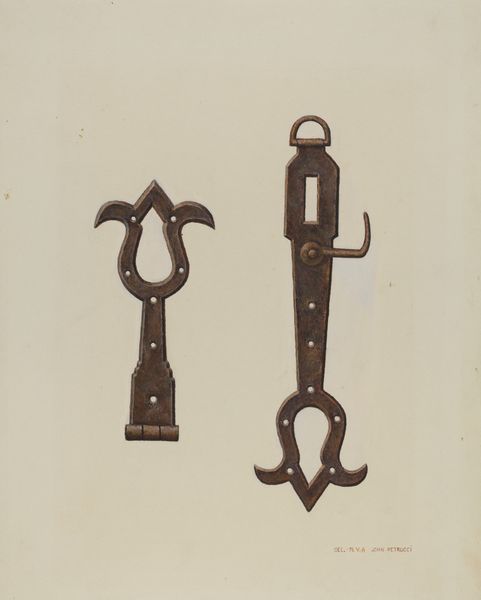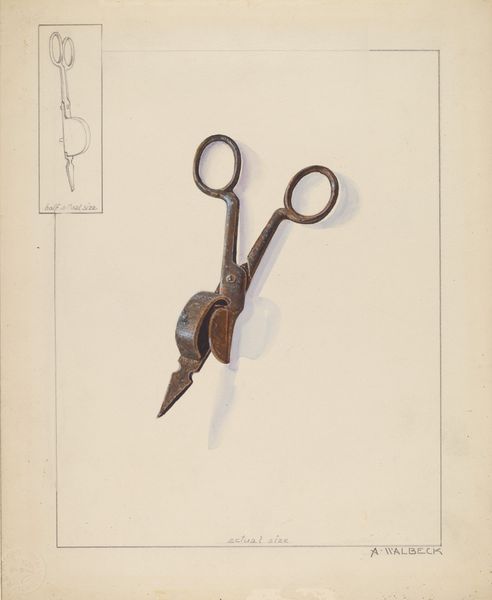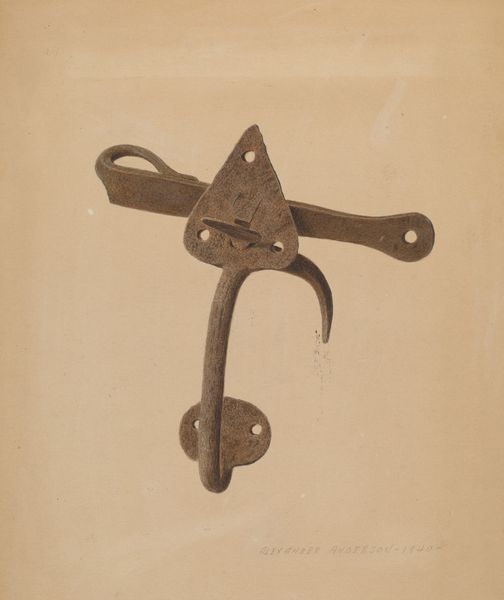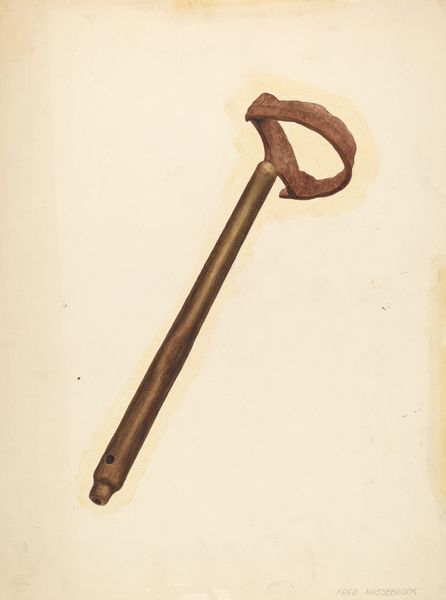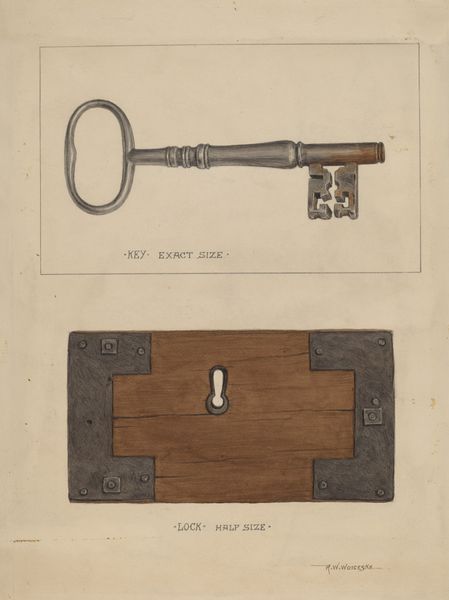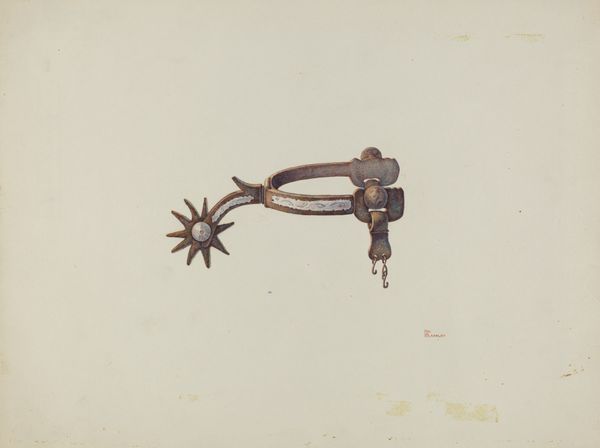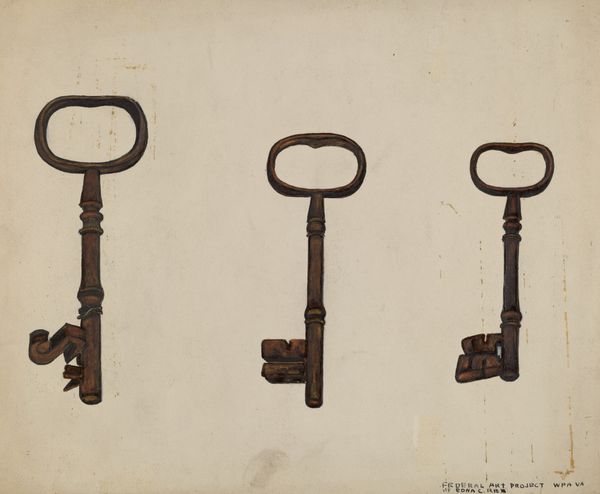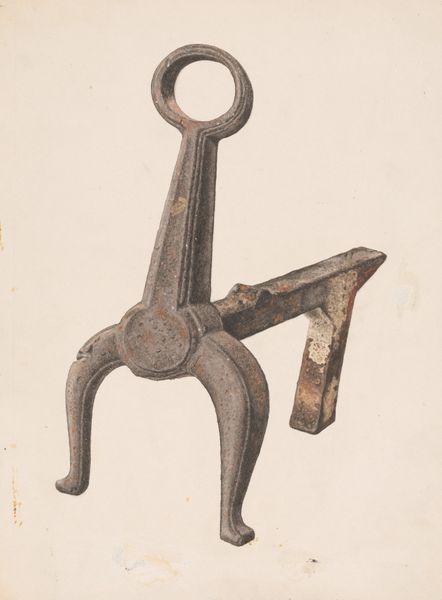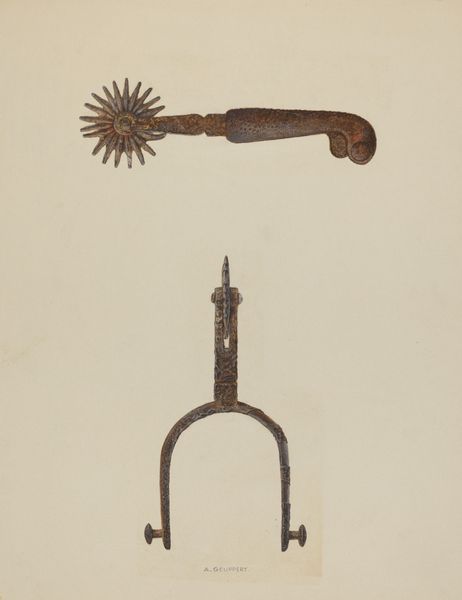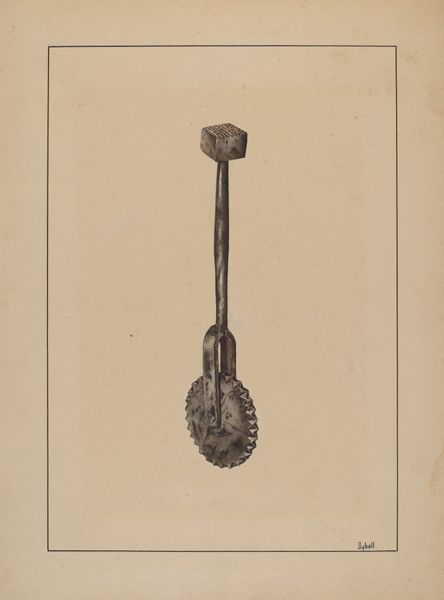
drawing, pencil
#
drawing
#
pencil drawing
#
pencil
Dimensions: overall: 45.5 x 34 cm (17 15/16 x 13 3/8 in.)
Copyright: National Gallery of Art: CC0 1.0
Curator: What a beautifully understated composition. At first glance, this pencil drawing of key and furniture hardware seems almost ghostly, set against the blank page. The floating objects, presented as if for inspection, draw me in to look for the stories behind each symbol. Editor: The arrangement does strike one as meticulous and quiet. We’re viewing Kurt Melzer’s "Key-Escutcheon-Drawer Pull," made around 1937. Melzer, a name associated with this museum since his own art has always embraced the community, uses pencil and a restrained touch to portray the artifacts before us. I see echoes of Bauhaus sensibilities—a celebration of everyday objects. Curator: I see a great deal more. These objects suggest so many hidden aspects of social function. I mean, look at the detail given to the keyhole escutcheon. These were common in upper-class households as indicators of family crests, asserting authority in the built spaces, in a domestic interior where privacy became important, but status remained something to proclaim even in architecture. Even these drawer pulls suggest specific kinds of labor. This hardware tells a distinct socioeconomic story. Editor: That's interesting! While that is clearly the purpose, I'm struck by the way the disembodied arrangement and simple symmetry elevate utilitarian forms into objects of contemplation. We remove them from practical purpose to dwell on their quiet design and the textures that define them. Don't you think it echoes something similar to Pop Art, albeit long before it was recognized, but embracing and ennobling the commonplace? The emphasis on the thing itself? Curator: That reading certainly modernizes our encounter with the artwork. Thinking of this drawing within the context of the artist and the Bauhaus I feel more aware of how Melzer understood that architecture frames social interactions, how public and private interplay, particularly considering that Melzer created many public works and sculptures within Germany that were later targeted by the Nazi regime. He uses a familiar artistic motif and subtly subverts it. It would be difficult to show his anti-fascist message overtly. Editor: Well, I find both insights illuminating and suggestive of art’s potential. It highlights not just aesthetic delight, but visual statements shaped by our collective, changing needs and perspectives. This makes "Key-Escutcheon-Drawer Pull" timeless and relevant to anyone seeking to find meaning.
Comments
No comments
Be the first to comment and join the conversation on the ultimate creative platform.
